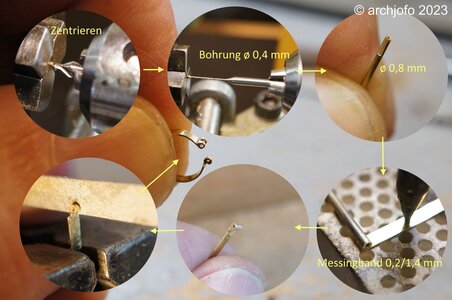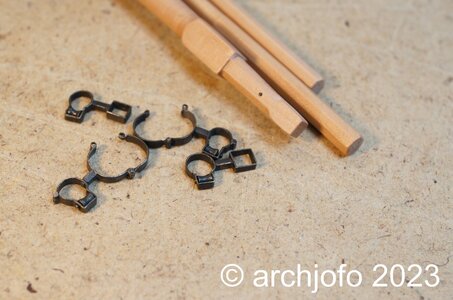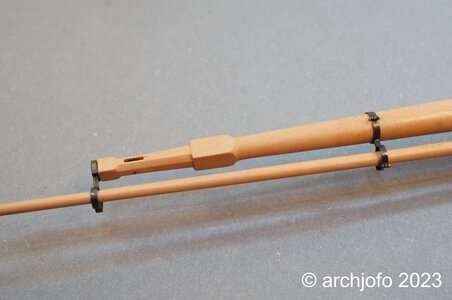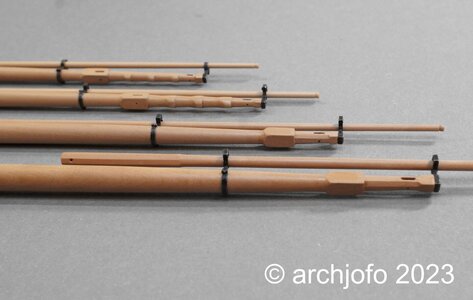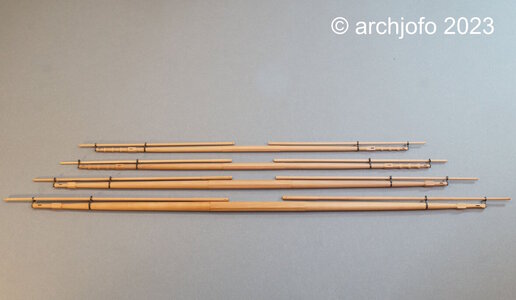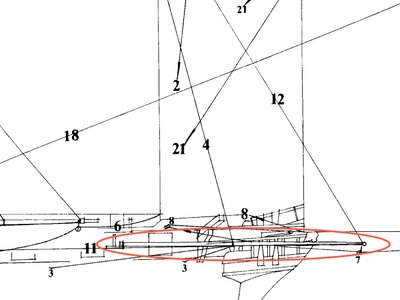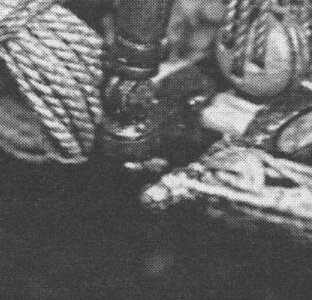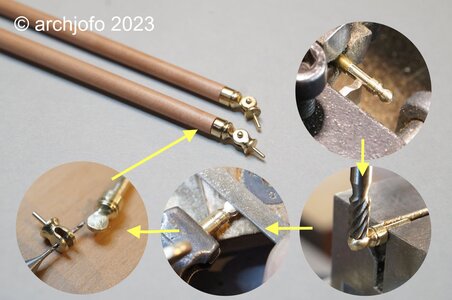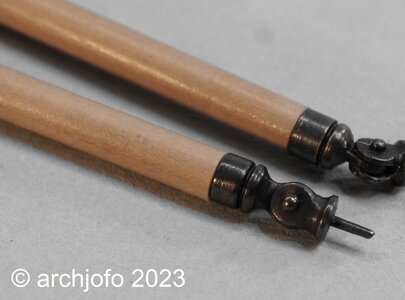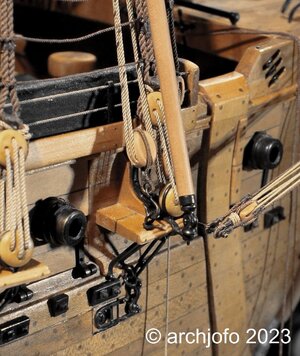@Uwek
@Mirek
@Steef66
Hi,
thanks for interest and the nice notes.
Also thanks to all the others for the many LIKES.
Hello Stephan,
thanks also for your efforts.
I was able to gather a bit of information from the relevant literature.
Continuation: Equipment of the yards - among other things Jackstays - Filière d`envergure.
Petrejus writes in his book "The model of the brig of the Irene" on page 207, that around 1811 yards were equipped with jackstays for the first time. By the early 1820s, these were in general use on larger square riggers, Petrejus continues. This is also consistent with statements in the Journal of the German Maritime Archives on the Hamburg Galiot Mary Ann on page 413. Initially these were made of cordage of natural fiber, and later these were made of wire rope or iron rods.
As can be clearly seen in some of the pictures of the original Paris model of La Créole, jackstays made of stiffened cordage were also used there. I have not found anything on the plans of Jean Boudriot's monograph on the La Créole itself. Under the illustration on p. 170, however, there is a short description of the jackstays. Accordingly, the sails should only have been attached at the lower and topsail yards by means of jackstays, if I have understood it correctly. The topgallant sails and the royals were obviously attached to the yard in the conventional way by means of a lashing.

Source: Monograph La Creole by J. Boudriot, p. 170
Since the jackstays, except for the head cringles, had to take the whole tractive force of the sails, I am of the opinion that massive eyebolts with collars were used to fasten them to the yards. In this respect, I am guided by a drawing from the Atlas du Génie maritime, which shows a massive forged eyebolt. Whether these eyebolts were also used for this purpose, I could not determine. However, this possibility does not seem to me to be completely absurd.
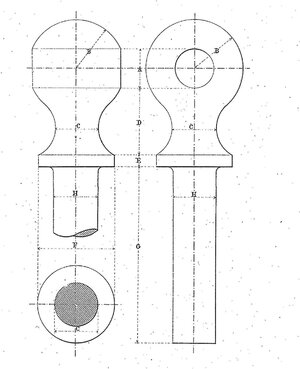
Source: Extract from Atlas du Génie maritime
Therefore, I made scaled test pieces and mounted them on a yard, which was a scrap from the yard production. After pulling in a served rope of the appropriate thickness, I think it looks quite passable, as can be seen in the following picture.
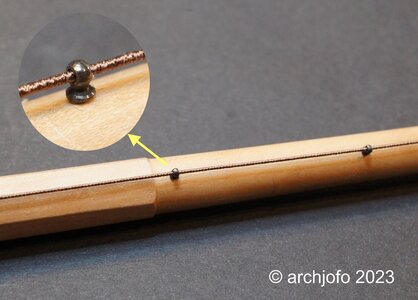
The jackstays were set on top of the yards in the forward area.
A served rope was first placed around the yardarm with an eye splice and then passed through the eyebolts, which were attached to the yard at intervals of about 3 m, towards the center of the yard. There at the rope end of the jackstay a thimble was tied in. With the thimble of the jackstay end from the other direction and a lashing tied in, the jackstays were braced in the center of the yard.
I will soon start making and installing the jackstays.
At the same time, there are still a number of questions to be clarified regarding the equipment of the yards, such as:
- Sequence of ropes to be attached to the yardarms (jackstays, lifts, braces, footropes, yard tackle etc.)
- design and fastening of the stirrups
- number and size of yard blocks
- yard hangers and fastening
etc.
The extent to which the French, like the English, had yard tackles permanently attached to the main yard and fore yard, or only when needed, also needs to be clarified. On the Paris model, however, there are no yard tackles to be seen. However, I miss corresponding hangers on the yardarms to attach them when needed. As described by Petrejus, it would be conceivable to have strops around the yardarms to which the pendants including tackle could be hooked if necessary.
Would be very grateful for hints and suggestions on the open questions.






